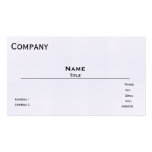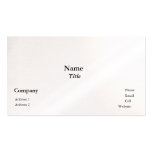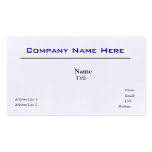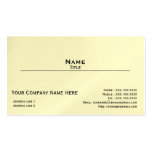The ultimate goal of all SEO endeavors is to attract visitors to your website. Yet all the traffic in the world won’t help you if your site is failing at conversions. The heart of any site’s ability to turn a visitor into a customer lies in the overall UX. UX is crucial aspect of SEO and Google has even been quoted as saying its “goal is to provide users with the most relevant results and a great user experience.” It’s the secret to its own behemoth success, and it’s the biggest factor in yours, too.
For your site to meet the expectations of all, it must provide a unique and enjoyable encounter for its visitors that is highly intuitive and easy to navigate. Yes, the keywords, images, meta tags, and so forth are still absolutely critical, but you must also infuse elements that provide a second-to-none user experience. There is no one-size-fits-all usability solution, however; to nail this, you need to know the audience you are serving.
Here are the basic rules to help you coalesce a powerful UX with your thoughtfully crafted SEO blueprint.
1. Establish Your Goals
Before any progress can be made on site design and UX, SEOs and Web designers must come to an agreement on what the goals of the website are. This will help push forward the ideas for design, content marketing strategies, and overall success.
Create buyer personas to help guide the questions and decisions that will be confronted in order to develop a premier UX. If there is ever a disagreement, simply refer back to the buyer persona outlines and ask a few key questions about the decision you’re making:
- What goal does this help to attain?
- Is this the best route to achieving this goal?
- Will the user enjoy this feature?
- How will this affect the visitor’s decision-making process?
- Will this drive conversions?
2. UX and Website Design
The very foundation of a great UX is a great website design. Major sites like Amazon and Zappos.com are constantly redesigning and testing various elements to their sites for peak UX and, therefore, peak conversion rates. By doing this, sites like these are directly responding to consumer habits. When weak areas of the experience are identified, changes are made and tested. If folks are abandoning the process or bouncing off the site, you need to find these discrepancies, test alternatives, and get the process ironed out.
If your site is unattractive, difficult to navigate, or cluttered, you should most certainly consider a redesign. Your metrics aren’t lying to you; plug these holes or you will keep sinking.
To gain a clear understanding of which areas of your site are less than desirable, ask friends, family, employees and customers for their feedback on which portions of the site they found problematic. Additionally, websites like User Testing can provide an unbiased view of how visitors perceive your site.
3. Engage and Inspire
By now, you should understand the massive benefits that blogging puts forth toward SEO. Not a blog here or there, however, but a full-fledged content marketing effort. But there is one largely underutilized facet of this tactic that many businesses aren’t taking advantage of; the opportunity to engage with your visitors.
UX isn’t just about the design of the site, it’s also about making connections with people. By posting content on a regular basis, you open up an awesome opportunity to engage your following in a meaningful way. Answer questions, respond directly to comments, and add additional value by discussing current trends in your industry. This demonstrates that you have some serious knowledge about your niche. Don’t just start the conversation; continue to engage with those who chime in, and brand loyalty will start to quickly emerge.
4. Measuring UX
Your first indicator of unsuccessful UX is bounce rates; if you are experiencing a high level of bounces, try to determine why. What page is leading to the highest numbers? Figure out what it is about these sections that is turning off visitors. If it’s a straight up mystery, ask them. Place a one question poll on the offending page and ask about prices, content, site experience; whatever you suspect might be the culprit. Your audience always has the answers.
Your second clue is the granddaddy of all metrics: Conversion rates. If you are not seeing the volume of conversions that you aim to produce, establish why this is. Does your site guide visitors through the conversion funnel? Are there clear and prominent calls-to-action on each page? What is it that you want your visitors to do next after arriving on a particular page; and is that clear to visitors as well? You essentially want to hold your customer’s hand through the site experience. Don’t make them think; make it obvious where to go next.
Much like SEO itself, UX is a constantly evolving process. Never allow your site to become sedentary; always seek out new ways to innovate and improve. Conduct A/B tests to see if different versions produce superior results. Send out surveys to your audience to find out what they would like to see. It is imperative to generate the most outstanding user experience you can possibly muster; UX is the cornerstone of SEO success.







No comments:
Post a Comment